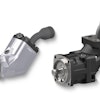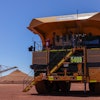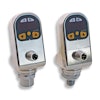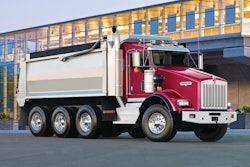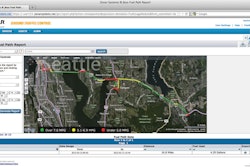On-board diagnostics (OBD) systems are used to monitor engine and emissions control components to ensure they are functioning properly and not releasing more than the regulated amount of emissions. In 2013, the U.S. Environmental Protection Agency (EPA) and California Air Resources Board (ARB) phased in heavy-duty OBD regulations (HD OBD) which requires all 2013 and above model year engines in heavy-duty on-highway vehicles weighing over 14,000 pounds to have an OBD system. (To learn more about OBD systems, read A monitor for emissions behavior [this will be hyperlinked to the online article] from the January/February 2013 issue of OEM Off-Highway.)
A large component of an OBD system is the set of monitors which watch over specific systems of the engine or emissions controls. According to Kevin Baney, Chief Engineer at Kenworth Truck Company, Kirkland, WA, these monitors verify crankcase ventilation, fuel injection, exhaust gas recirculation (EGR), intake air control, cooling and exhaust aftertreatment systems. The OBD system is also required by the regulations to detect any misfires that may arise. In addition, the Comprehensive Component Monitor must validate every remaining input and output of the engine computers which could impact emissions, says Baney.
“Each of the monitors is capable of setting many distinct fault codes which identify the specific problem condition or signal at the finest possible resolution,” says Baney. “A failure is defined as any change from as-built conditions which can raise the engine’s output of any regulated emissions component past a defined level or result in inadequate control of an emissions system.”
HD OBD regulations specify 13 major systems and parameters that an OBD system must monitor to ensure compliance. The systems and components, followed by the parameters requiring monitoring, are listed below.
1. Fuel system
- Fuel system pressure control
- Injection quantity
- Injection timing
- Feedback control
2. Misfire
- Detect continuous misfire
3. EGR
- Low flow
- High flow
- Slow response
- EGR cooler operation
- EGR catalyst performance
- Feedback control
4. Boost pressure
- Underboost
- Overboost
- Slow response
- Charge air under cooling
- Feedback Control
5. Non-methane hydrocarbons (NMHC) catalyst
- Conversion efficiency
- Provide diesel particulate filter (DPF) heating
- Provide selective catalytic reduction (SCR) feedgas (e.g. nitrogen dioxide [NO2])
- Provide post DPF NMHC cleanup
- Catalyst aging
6. SCR nitrogen oxides (NOx) catalyst
- Conversion efficiency
- SCR reductant: delivery performance, tank level, quality and injection feedback control
7. DPF
- Filtering performance
- Frequent regeneration
- NMHC conversion
- Incomplete regeneration
- Missing substrate
- Active regeneration fuel delivery
- Feedback control
8. Exhaust gas sensors
- For air-fuel ratio and NOx sensors: performance, circuit faults, feedback and monitoring capability
- Other exhaust gas sensors
- Sensor heater function
- Sensor heater circuit faults
9. Cooling system
- Thermostat
- ECT sensor circuit faults
- ECT sensor circuit out-of-range
- ECT sensor circuit rationality faults
10. Closed crankcase ventilation (CCV)
11. Comprehensive component monitoring
12. Cold start emission reduction strategy
13. Other emission control system monitoring

